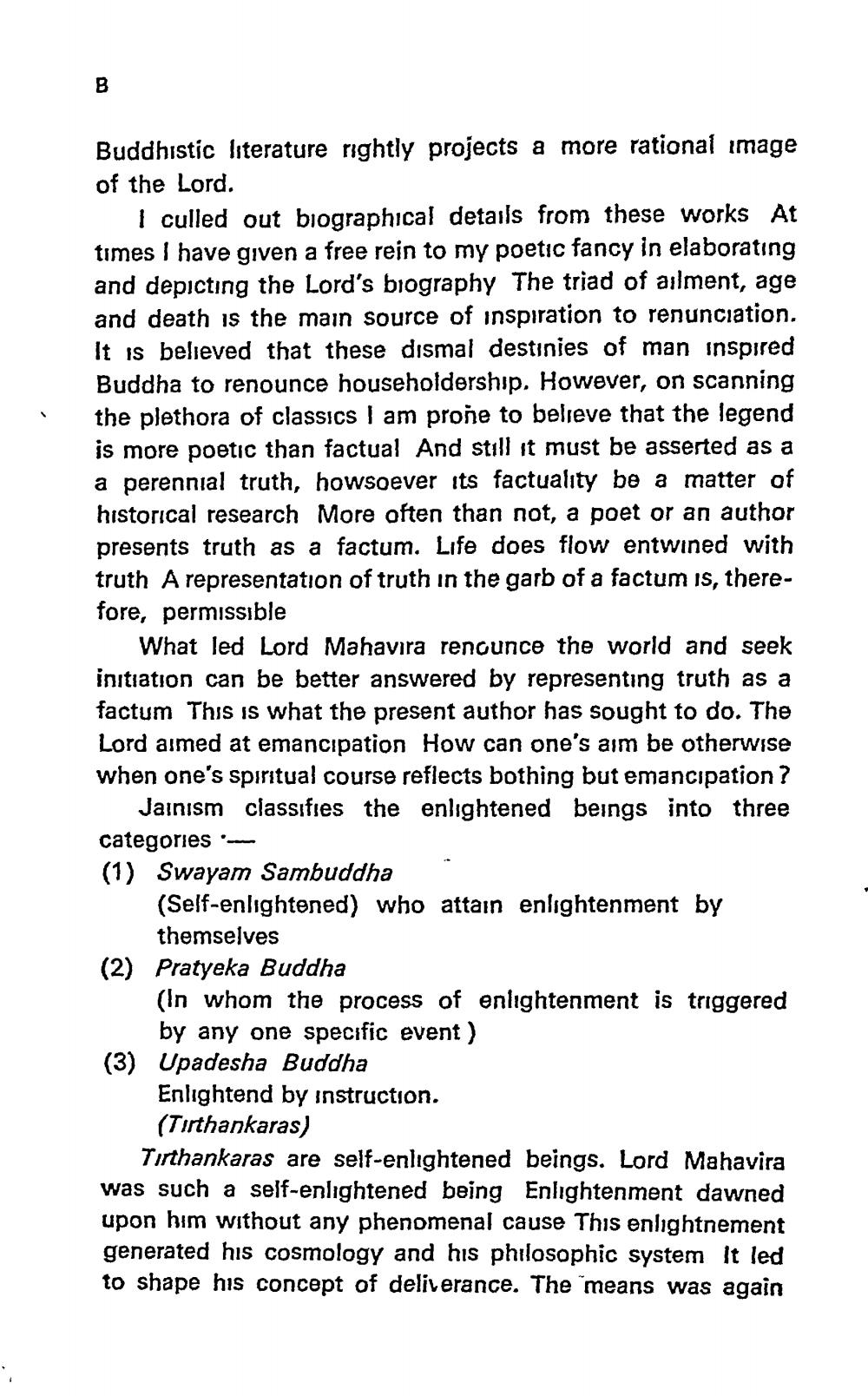________________
Buddhistic literature nightly projects a more rational image of the Lord.
1 culled out biographical details from these works At times I have given a free rein to my poetic fancy in elaborating and depicting the Lord's biography The triad of ailment, age and death is the main source of inspiration to renunciation. It is believed that these dismal destinies of man inspired Buddha to renounce householdership. However, on scanning the plethora of classics I am prone to believe that the legend is more poetic than factual And still it must be asserted as a a perennial truth, howsoever its factuality be a matter of historical research More often than not, a poet or an author presents truth as a factum. Life does flow entwined with truth A representation of truth in the garb of a factum is, therefore, permissible
What led Lord Mahavira renounce the world and seek initiation can be better answered by representing truth as a factum This is what the present author has sought to do. The Lord aimed at emancipation How can one's aim be otherwise when one's spiritual course reflects bothing but emancipation?
Jainism classifies the enlightened beings into three categories (1) Swayam Sambuddha
(Self-enlightened) who attain enlightenment by
themselves (2) Pratyeka Buddha
(In whom the process of enlightenment is triggered
by any one specific event) (3) Upadesha Buddha
Enlightend by instruction.
(Tirthankaras)
Tirthankaras are self-enlightened beings. Lord Mahavira was such a self-enlightened being Enlightenment dawned upon him without any phenomenal cause This enlightnement generated his cosmology and his philosophic system It led to shape his concept of deliverance. The means was again




